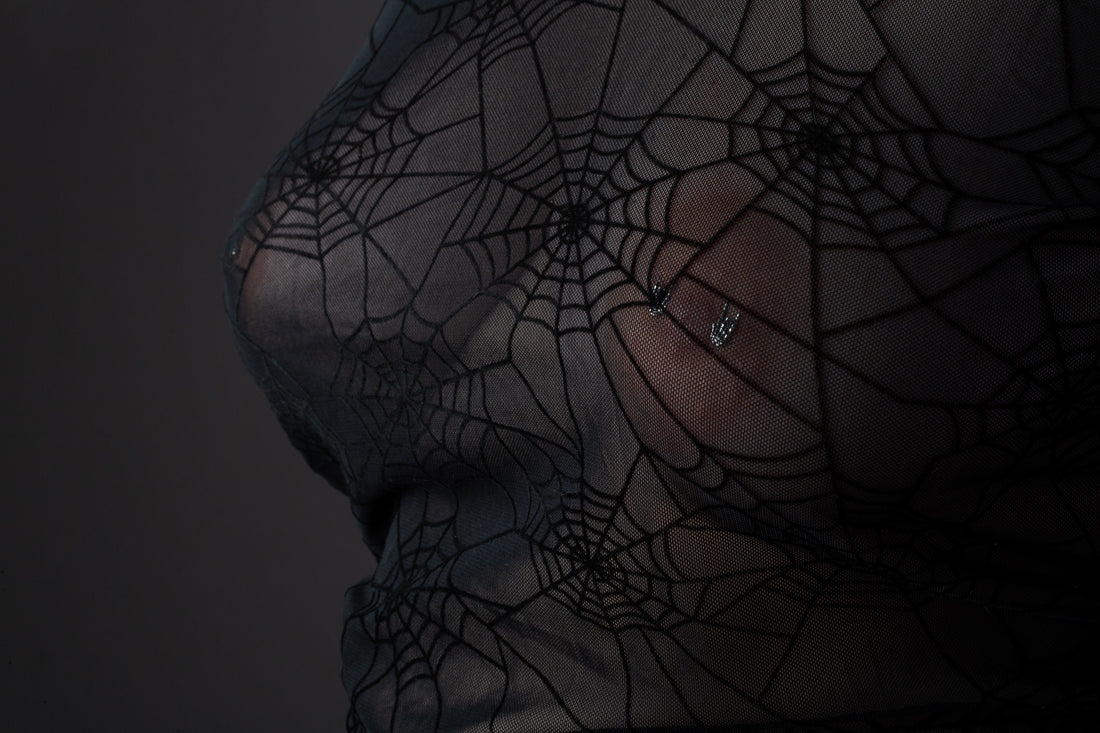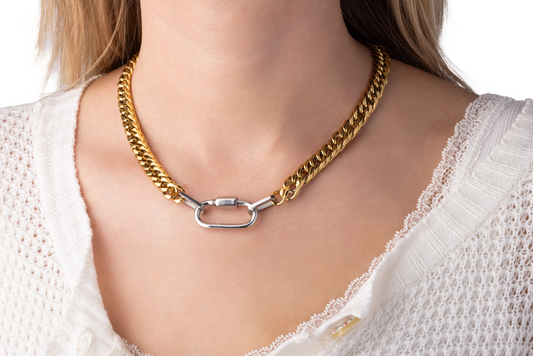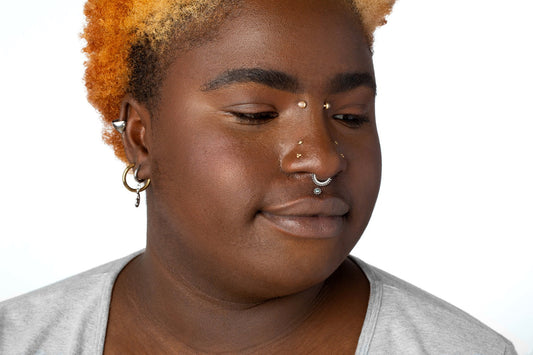Nipple piercings are a bold and popular choice in the world of body modification. Whether you are considering them for aesthetic reasons, to enhance sensitivity, or a confidence boost, it is worth learning about this piercing before making the commitment to get it done. In this blog post, we'll cover everything from pain and aftercare to jewelry options.
Pain and Procedure:
Pain is a common concern when it comes to piercings and particularly nipple piercings. It's important to know that everyone's pain threshold is different, so the experience can vary from person to person. However, nipple piercings are considered to be on the higher end of the pain scale compared to other piercings.
The pain is typically quick and is described by many as feeling like a sharp pinch. If you plan to get both nipple pierced, expect the second nipple to hurt a bit more! The initial brief pain may be followed by some soreness, swelling, and sensitivity that can persist for hours to days.
Following the piercing, you will be fit with a straight barbell. Depending on your anatomy and your piercer's preferences, you will be fit with 12 to 14 gauge jewelry. Your bar will extra long to accommodate for swelling and may eventually need to be downsized.
Aftercare:
Nipples are a sensitive and delicate area. Meaning, that this piercing can take up to a year (sometimes longer) to full heal. Proper aftercare is crucial to promote a smooth healing process and avoid infections and complications!
Here are some key aftercare steps:
1. Clean Twice a Day: Use Neilmed's sterile saline solution to clean your piercings twice a day. Avoid using alcohol, hydrogen peroxide, tea tree oil, or harsh soaps.
2. Don't Touch: Avoid touching or twisting your piercing unnecessarily! This includes avoiding nipple play and other activities that could introduce bacteria to the area. If needed, wash hands before going near them!
3. Comfortable Clothing: You may choose to opt for loose and breathable fabrics to minimize friction on your nipples. Other people find that bras and tighter clothing feel more comfortable while their nipple heal! Wear what makes your body comfortable.
4. Be Patient: Nipples can take a while to heal. They also heal from the outside in. Just because your piercing looks healed on the outside does not mean it is in the inside. While it heals, avoid changing jewelry and keep up with your aftercare routine.
5. Monitor Piercing: Watch for symptoms such as prolonged swelling or pain, pus, or an unusual odor. If you notice these signs, consult a professional piercer -- they could be signs of infection or rejection.
Jewelry Options:
Something to look forward to after your piercing heals is upgrading your jewelry! There are a range of options for body jewelry that range from simple and subtle to dangling and decorative. Here are some popular jewelry options:
1. Straight barbells: The most common choice for initial nipple piercings, straight barbells are versatile and provide minimal movement. They come in various threadings and endings -- catering to different preferences and styles!
2. Captive Bead Rings: These rings offer a classic look that can be adorned with bead, opals, or dangling charms. They have a bit more movement than barbells and should be worn only in healed piercings.
3. Circular Barbells: Similar to CBRs, horseshoes offer a unique jewelry option. They can be a cute choice once your piercing is totally healed.
4. Shields: For those who want to make a statement, nipple shields are a cute choice for healed piercings. They can feature minimalistic designs to intricate patterns featuring charms and chains.
Considerations Before Getting Pierced:
1. Healing Time and Lifestyle: As mentioned, nipple piercings can take a while to heal and lifestyle adjustments may be required during this period. If you're involved in activities that could irritate, snag, or introduce bacteria to the piercings -- plan accordingly!
2. Sensitivity Changes: Nipple piercings can increase or decrease nipple sensitivity. This change varies person to person, but it's worth considering how this may affect you.
3. Rejection or Migration: Like any piercing, there is a chance that your body could reject the jewelry. Visiting a professional piercer and following proper aftercare can reduce these risks.
4. Visit a Professional Piercer: Always choose a trusted and reputable piercer that is experience in nipple piercing.









